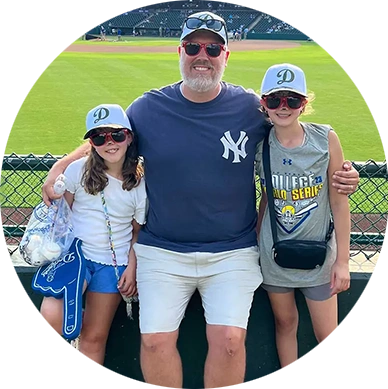When most people think about slip and fall accidents, they picture someone getting back up, dusting themselves off, and walking away with minor bruises. The reality tells a much different story. These seemingly simple accidents can create devastating long term injuries that change lives forever. In Pennsylvania, thousands of residents discover each year that what started as an ordinary day turns into a lifetime of medical challenges and financial strain.
Slip and fall accidents rank among the leading causes of emergency room visits across the Commonwealth. What makes these incidents particularly troubling is how deceptive they can be. A person might feel relatively fine immediately after the fall, only to wake up the next morning unable to move properly. Others find themselves dealing with pain and mobility issues that persist for months or even years after the initial incident. To ease your burden and maximize your chances of getting compensated after a slip and fall accident, seek the services of an experienced Philadelphia slip and fall lawyer at Gibbons & Crichton, Personal Injury & Accident Lawyers.
The Hidden Nature of Serious Fall Injuries
Many slip and fall victims make the mistake of assuming they escaped serious harm because they can walk away from the scene. This assumption proves dangerous time and again. The human body often masks the full extent of injury through adrenaline and shock. What feels like a minor inconvenience today can develop into a debilitating long term injury that requires extensive medical intervention.
Emergency rooms across Pennsylvania see this pattern repeatedly. Patients arrive days or weeks after their initial fall, confused about why their pain has worsened rather than improved. Medical professionals explain that some injuries, particularly those affecting the spine and brain, may not reveal their full impact immediately. The delayed onset of symptoms creates additional complications for both treatment and legal proceedings.
Common Types of Long Term Injuries
Traumatic brain injuries represent one of the most serious consequences of slip and fall accidents.
Even falls that seem minor can cause the brain to impact against the inside of the skull. This type of injury often goes undetected initially because symptoms may not appear for hours or days. Victims might experience memory problems, difficulty concentrating, mood changes, and persistent headaches that interfere with work and daily activities.
Spinal cord injuries create another category of devastating long term consequences. The spine consists of delicate vertebrae and discs that can shift, crack, or herniate during a fall. These injuries frequently result in chronic pain, reduced mobility, and in severe cases, partial or complete paralysis. Spinal injuries often require multiple surgeries and years of rehabilitation, with no guarantee of full recovery.
Joint injuries, particularly to the hips, knees, and shoulders, commonly occur during falls. These injuries often involve:
- Torn ligaments and tendons that require surgical repair
- Fractured bones that heal improperly without adequate treatment
- Cartilage damage that leads to early-onset arthritis
- Chronic inflammation that limits the range of motion
Nerve damage represents another serious category of long-term injury. When falls cause compression or stretching of nerve pathways, victims may experience permanent numbness, tingling, or loss of function in affected areas. This type of injury proves particularly frustrating because it often resists traditional treatment methods.
The Reality of Slip and Fall Injury Treatment
Effective slip and fall injury treatment requires a comprehensive approach that addresses both immediate and long term needs. Many victims discover that their initial emergency room visit represents just the beginning of a long medical journey.
The treatment process often involves multiple specialists, including orthopedic surgeons, neurologists, physical therapists, and pain management experts.
Physical therapy becomes a crucial component of recovery for most serious fall injuries. These sessions help patients regain strength, flexibility, and coordination that may have been compromised. However, the process demands significant time and financial investment. Many patients require months or years of regular therapy sessions to achieve maximum improvement.
Pain management emerges as another critical aspect of treatment. Chronic pain from fall injuries can persist long after the initial healing period ends. This ongoing discomfort affects sleep, work performance, and overall quality of life. Treatment options may include prescription medications, injections, nerve blocks, and in some cases, surgical interventions.
Financial Impact of Long Term Injuries
The economic consequences of serious fall injuries extend far beyond initial medical bills. Long term injury treatment creates ongoing expenses that can devastate family finances. These costs typically include:
- Regular specialist appointments and follow-up care
- Prescription medications for pain and inflammation management
- Medical equipment such as braces, wheelchairs, or mobility aids
- Home modifications to accommodate physical limitations
- Lost wages from inability to work at full capacity
Many families discover that their health insurance coverage proves inadequate for the extensive treatment required. Insurance companies often limit coverage for certain types of therapy or refuse to approve experimental treatments that might provide relief. These limitations force families to choose between financial stability and necessary medical care.
The Emotional Toll of Permanent Disabilities
Long term injuries affect more than just physical health. Victims often struggle with depression, anxiety, and feelings of helplessness as they adjust to their new reality. The loss of independence that accompanies many serious injuries creates additional emotional challenges that require professional support.
Family relationships frequently suffer under the strain of caring for an injured loved one. Spouses may need to become full-time caregivers while simultaneously managing household finances and responsibilities. Children might need to take on adult responsibilities to help with daily tasks that their injured parent can no longer perform.
Social isolation becomes another common problem. Activities that once brought joy may no longer be possible due to physical limitations or chronic pain. This isolation compounds the emotional difficulties already present, creating a cycle that proves difficult to break without professional intervention.
Prevention and Property Owner Responsibility
Pennsylvania property owners have a legal duty to maintain safe conditions for visitors. This responsibility includes promptly addressing hazards such as wet floors, uneven surfaces, inadequate lighting, and damaged walkways. When property owners fail in this duty, they may be held liable for resulting injuries.
Weather conditions create additional responsibilities for property owners throughout Pennsylvania.
Snow and ice removal, proper drainage, and adequate lighting during winter months become critical safety factors. Property owners who neglect these responsibilities put visitors at unnecessary risk of serious harm.
Get in Touch with Us Today
Insurance companies often attempt to minimize settlements or deny claims entirely. Professional legal representation levels the playing field and protects the victims’ rights throughout the process.
Contact our experienced legal team at Gibbons & Crichton today for consultation to discuss your case and explore your options for compensation.














